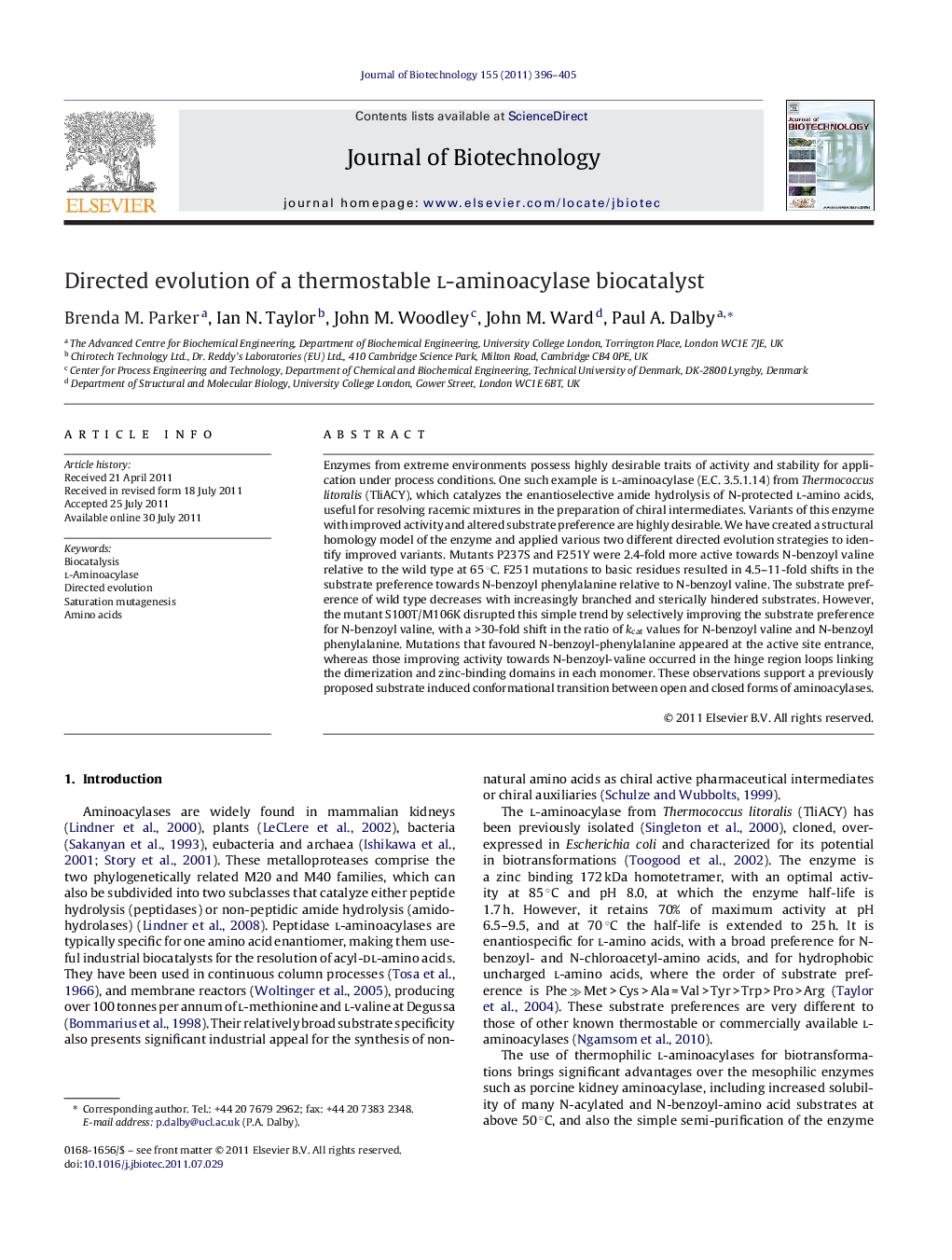| Article ID | Journal | Published Year | Pages | File Type |
|---|---|---|---|---|
| 23963 | Journal of Biotechnology | 2011 | 10 Pages |
Enzymes from extreme environments possess highly desirable traits of activity and stability for application under process conditions. One such example is l-aminoacylase (E.C. 3.5.1.14) from Thermococcus litoralis (TliACY), which catalyzes the enantioselective amide hydrolysis of N-protected l-amino acids, useful for resolving racemic mixtures in the preparation of chiral intermediates. Variants of this enzyme with improved activity and altered substrate preference are highly desirable. We have created a structural homology model of the enzyme and applied various two different directed evolution strategies to identify improved variants. Mutants P237S and F251Y were 2.4-fold more active towards N-benzoyl valine relative to the wild type at 65 °C. F251 mutations to basic residues resulted in 4.5–11-fold shifts in the substrate preference towards N-benzoyl phenylalanine relative to N-benzoyl valine. The substrate preference of wild type decreases with increasingly branched and sterically hindered substrates. However, the mutant S100T/M106K disrupted this simple trend by selectively improving the substrate preference for N-benzoyl valine, with a >30-fold shift in the ratio of kcat values for N-benzoyl valine and N-benzoyl phenylalanine. Mutations that favoured N-benzoyl-phenylalanine appeared at the active site entrance, whereas those improving activity towards N-benzoyl-valine occurred in the hinge region loops linking the dimerization and zinc-binding domains in each monomer. These observations support a previously proposed substrate induced conformational transition between open and closed forms of aminoacylases.
► A structural homology model of l-aminoacylase from Thermococcus litoralis was created. ► Two different directed evolution strategies identified improved variants. ► Mutations that favoured N-benzoyl-phenylalanine appeared at the active site entrance. ► Mutations favouring N-benzoyl-valine occurred in the dimerization and zinc-binding domains.
